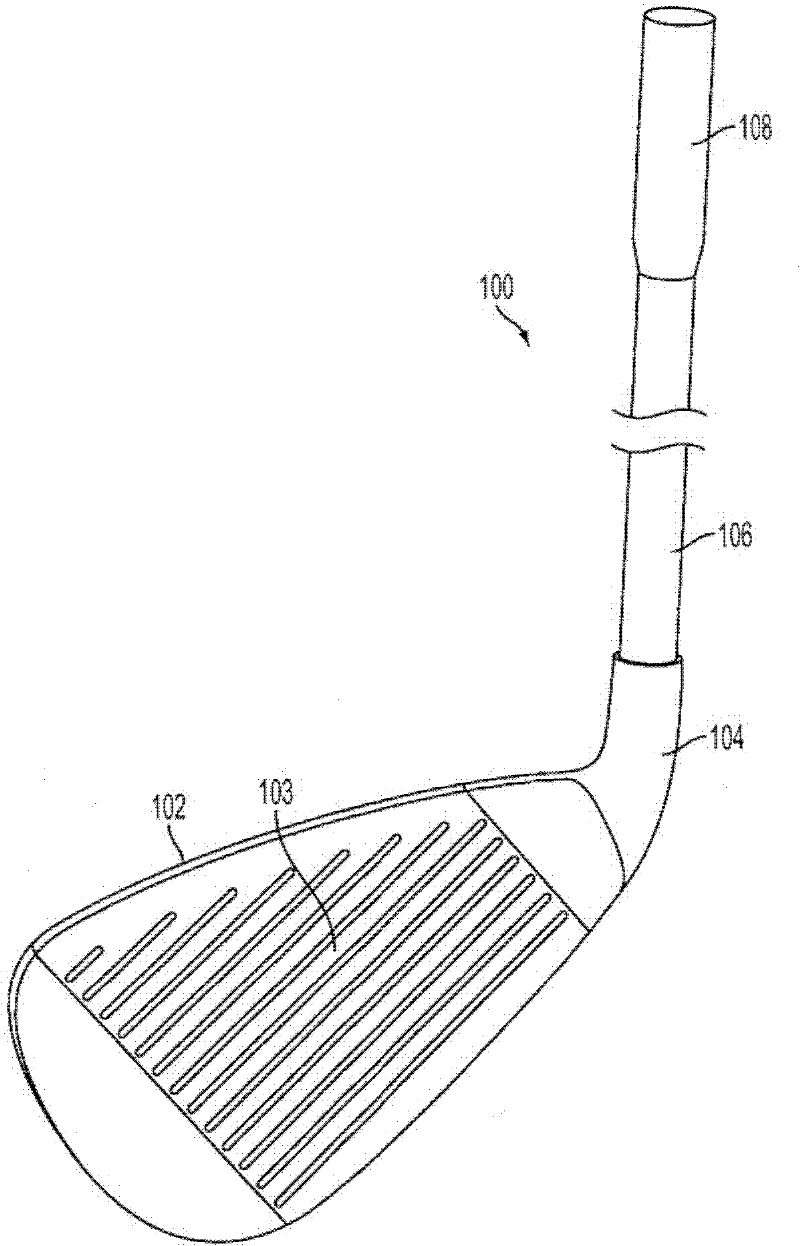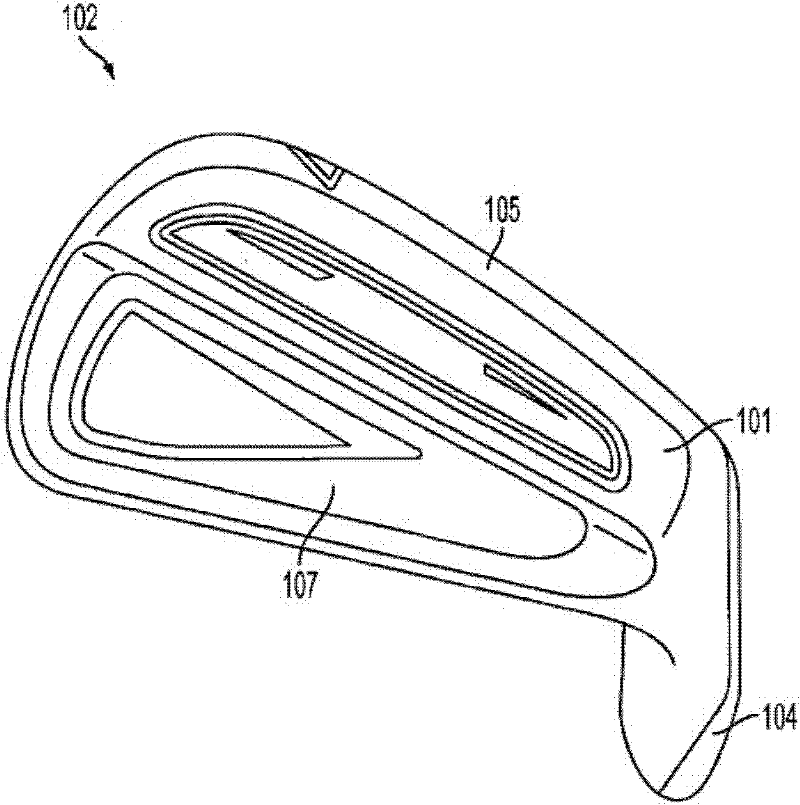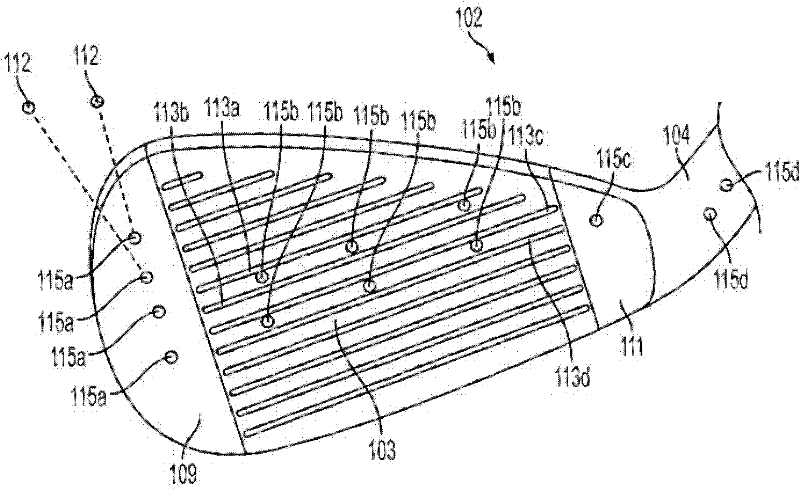Golf club head wear indicator
A golf club head and club face technology, applied to golf balls, golf clubs, rackets, etc., can solve the problems of loss of rigidity, energy dissipation, etc.
- Summary
- Abstract
- Description
- Claims
- Application Information
AI Technical Summary
Problems solved by technology
Method used
Image
Examples
Embodiment Construction
[0018] In the following description of various exemplary structures in accordance with the present invention, reference is made to the accompanying drawings, which form a part hereof, and in which are shown by way of illustration various exemplary articles, including one or more golf balls Shaft or golf club head structure. In addition, it is to be understood that other specific arrangements of parts and structures may be utilized and structural and functional modifications may be made without departing from the scope of the present invention. Here, although the terms "top," "bottom," "front," "rear," "side," "back"), etc., are used throughout this specification to describe various exemplary features and elements of the invention, the The term is only for reasons of convenience, and is exemplarily based on the exemplary orientation shown in the accompanying drawings or the orientation in common use.In addition, the term "plurality" used herein indicates any number greater than...
PUM
 Login to View More
Login to View More Abstract
Description
Claims
Application Information
 Login to View More
Login to View More - R&D
- Intellectual Property
- Life Sciences
- Materials
- Tech Scout
- Unparalleled Data Quality
- Higher Quality Content
- 60% Fewer Hallucinations
Browse by: Latest US Patents, China's latest patents, Technical Efficacy Thesaurus, Application Domain, Technology Topic, Popular Technical Reports.
© 2025 PatSnap. All rights reserved.Legal|Privacy policy|Modern Slavery Act Transparency Statement|Sitemap|About US| Contact US: help@patsnap.com



